Core Revival: Postpartum Ab Workout for Strength and Stability

Postnatal Exercise Guidelines
When it comes to postpartum exercise, timing is everything. The American College of Obstetricians and Gynecologists (ACOG) recommends waiting until your body feels ready, which can vary depending on the type of delivery and recovery. For women with uncomplicated deliveries, light activity can begin within a week or two. For others recovering from cesarean sections or complications like diastasis recti, it’s essential to consult your doctor before starting any fitness routine.
Once cleared, focus on low-impact exercises that rebuild core strength and stability without straining your body. Even 10–15 minutes a day can make a difference in your recovery, helping you feel stronger and more balanced as you navigate life with a newborn.
Still avoid any high effort activity within first 12 weeks after giving birth. For example, running, jogging, cardio (tabata circuit and alike), team sports and swimming.
Why post-pregnancy exercise is good for you 🏋️♀️
Rebuilding core strength after pregnancy isn’t just about aesthetics—it’s about regaining functionality, improving posture, and supporting your lower back. After my baby was born, I noticed how much my core had weakened, making simple tasks like bending over or carrying the car seat more challenging.
This workout is gentle yet effective, targeting the deep abdominal muscles safely. It’s designed for busy moms like me who want a quick, equipment-free routine that fits into a packed schedule. I often do this workout while my baby naps.
Let’s Get Started: The 15-Minute Core Routine
This routine features eight exercises that rebuild strength and stability step by step. Perform each move for 45 seconds, followed by 15 seconds of rest. Complete the circuit twice for a 15–20-minute session.
1. Postpartum Planks (aka Standard Plank Hold)
Planks are a fantastic exercise for rebuilding core strength and stability. This variation is safe and effective for postpartum recovery, focusing on engaging deep abdominal muscles without straining them.
How to Do It:
- Begin in a modified plank position by placing your forearms on the ground, with elbows directly under your shoulders.
- Extend your legs straight behind you, balancing on your toes.
- Keep your body in a straight line from head to heels, engaging your core and avoiding sagging or arching your back.
- Hold this position for 10–30 seconds to start, gradually increasing the duration as you build strength.
Tips:
- If this feels too challenging, drop your knees to the floor to create a modified plank.
- Focus on keeping your core tight and your breathing steady.
- Avoid letting your hips dip or lifting them too high—aim for a straight line.
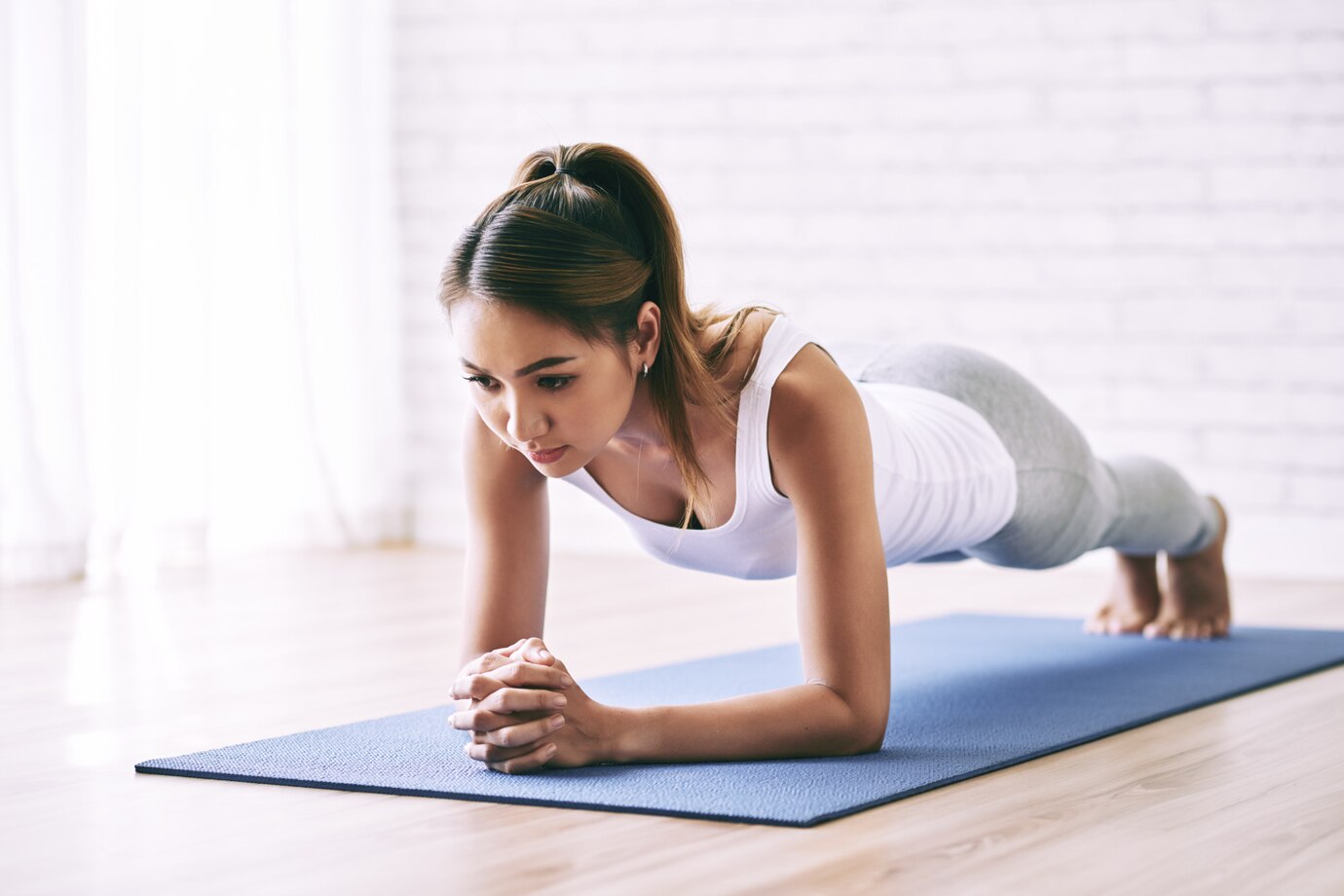
2. Bird Dog 🐦
This dynamic move strengthens the core, back, and glutes, improving overall stability.
How to Do It:
- Begin on your hands and knees, wrists under shoulders and knees under hips.
- Extend your right arm and left leg straight out, keeping your hips level.
- Hold for 2–3 seconds, then return to starting position and switch sides.
Tips:
- Move slowly to maintain balance.
- Engage your core to avoid arching your back.
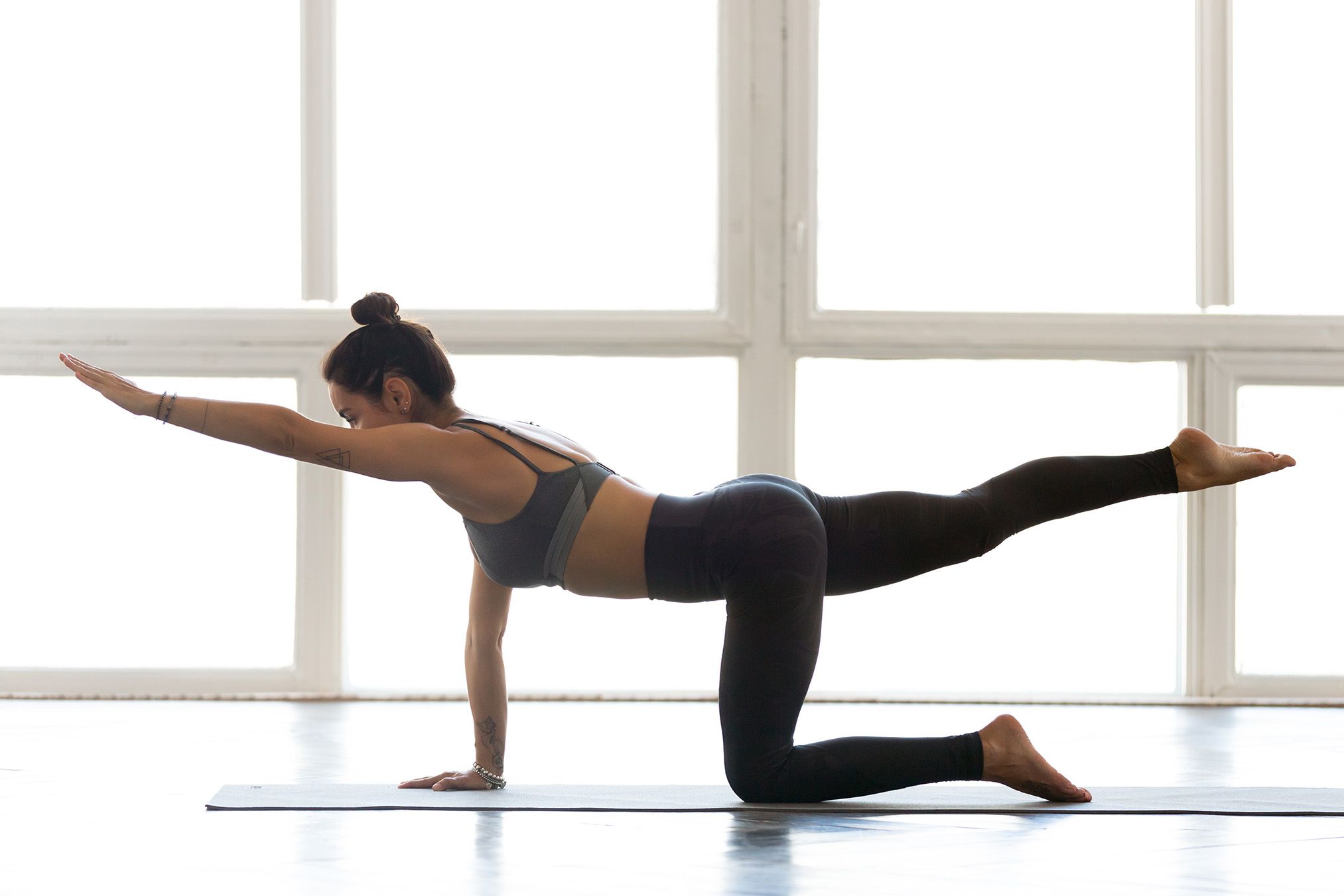
3. Dead Bug 🐞
Dead bugs target the deep core muscles without placing stress on the lower back.
How to Do It:
- Lie on your back with arms extended toward the ceiling and knees bent at 90 degrees.
- Lower your right arm and left leg simultaneously, keeping your back pressed to the floor.
- Return to the starting position and switch sides.
Tips:
- Keep movements slow and controlled.
- Maintain contact between your lower back and the floor.
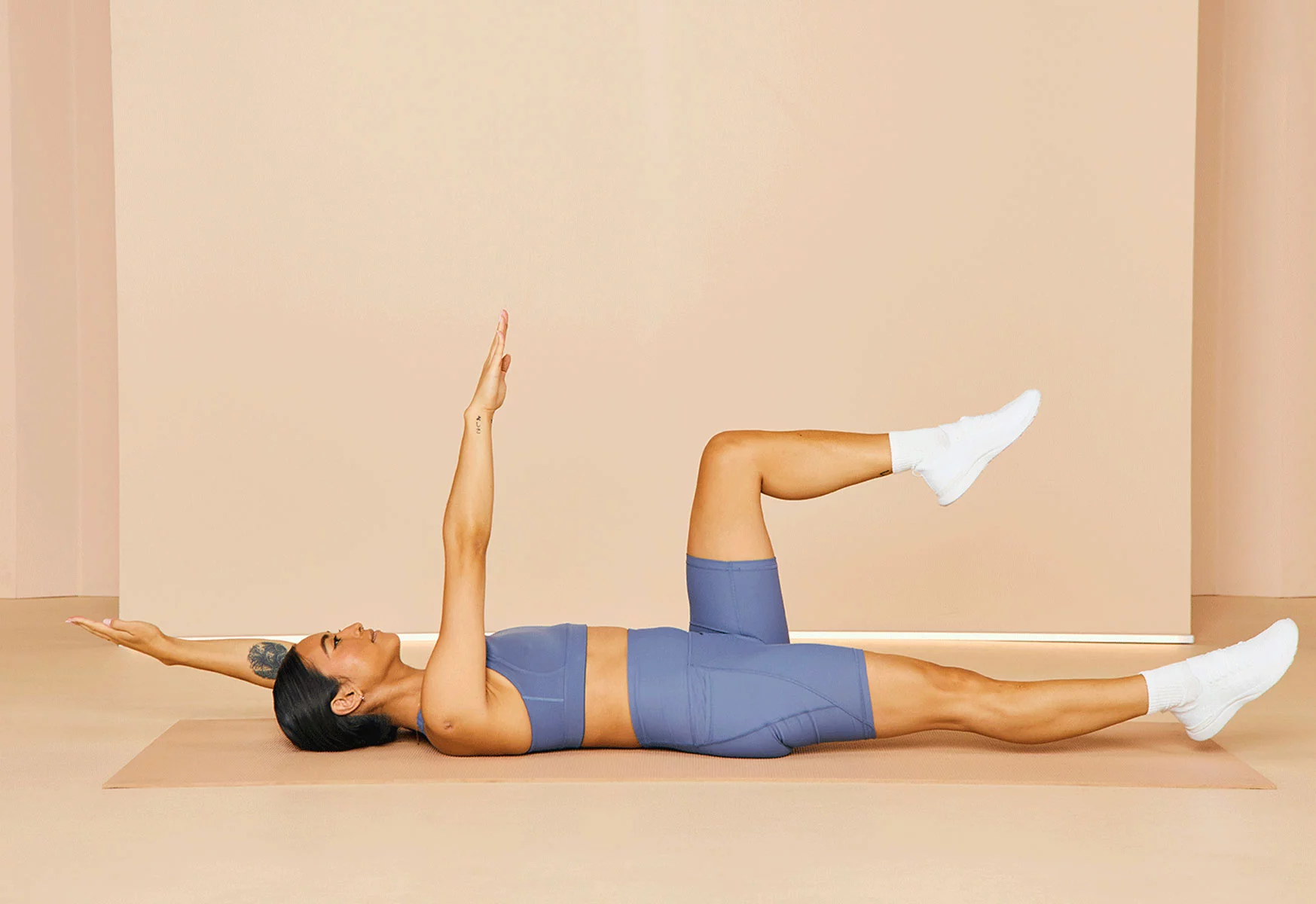
4. Modified Side Plank
A beginner-friendly plank variation that targets the obliques and stabilizes the core.
How to Do It:
- Lie on your side with knees bent and elbow under your shoulder.
- Lift your hips off the ground, creating a straight line from head to knees.
- Hold for 20–30 seconds, then switch sides.
Tips:
- Engage your core to prevent sinking into your shoulder.
- For a challenge, straighten your legs into a full side plank.
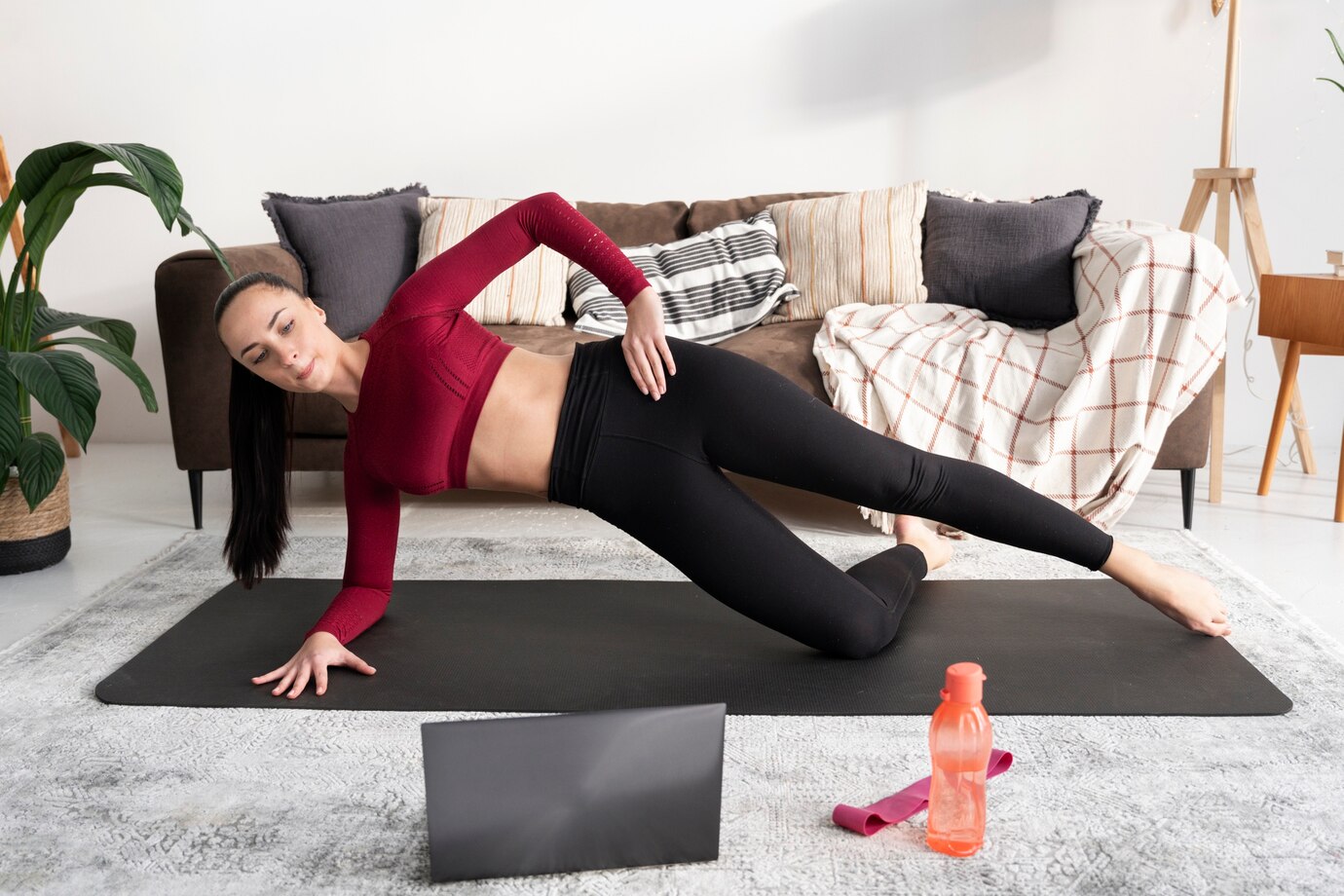
5. Single Leg Raises
This move targets the lower abs and strengthens the core.
How to Do It:
- Lie on your back with your legs extended and arms by your sides.
- Slowly lift your right leg off the floor, keeping it straight, until it’s at a 45-degree angle.
- Lower the leg back down with control and repeat on the other side.
Tips:
- Keep your lower back pressed into the floor to engage your core and prevent strain.
- Perform the movement slowly and with control, focusing on using your abdominal muscles to lift your leg.

6. Bridge Marches
Bridge marches combine glute activation with core stabilization for a full lower-body engagement.
How to Do It:
- Start in a glute bridge position, with hips lifted and shoulders on the floor.
- Raise your right knee toward your chest while keeping your hips level.
- Lower and switch to the left leg, alternating sides.
Tips:
- Keep your core tight to avoid letting your hips drop.
- Move slowly for better control.
- For extra challenge straighten your leg, just like on the photo.
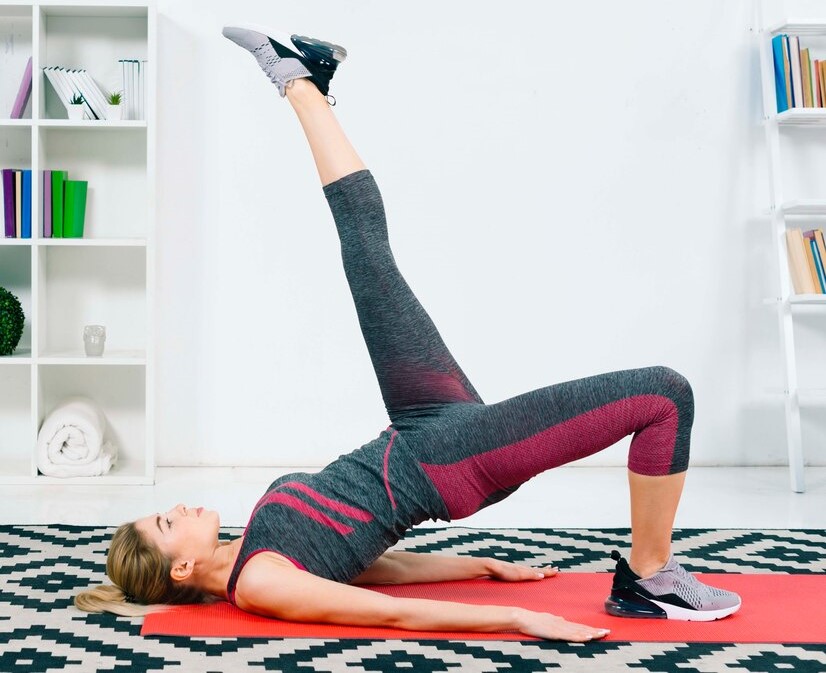
7. Toe Taps
This move strengthens the lower abs while keeping strain off the midline.
How to Do It:
- Lie on your back with your legs bent at 90 degrees, shins parallel to the ground.
- Lower one foot to tap the ground lightly, then return to starting position.
- Alternate legs slowly.
Tips:
- Maintain contact between your lower back and the floor.
- Move deliberately to fully engage your core.
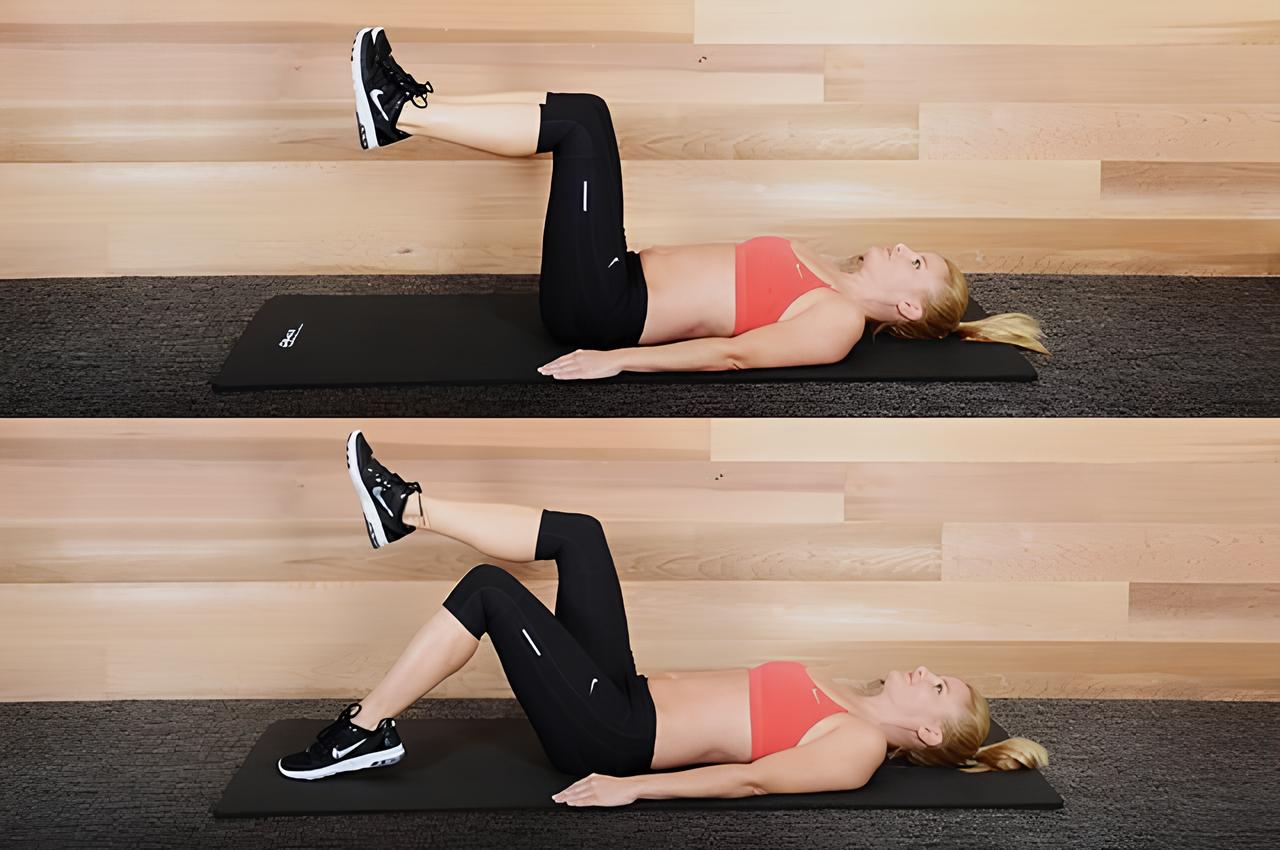
8. Standing Side Bends 🌟
A simple standing move to stretch and strengthen the obliques.
How to Do It:
- Stand tall with feet shoulder-width apart, arms relaxed at your sides.
- Slowly bend to the right, reaching your right hand toward your knee.
- Return to center and repeat on the other side.
Tips:
- Avoid leaning forward or backward—keep the movement purely side to side.
- Add a light weight, like a water bottle, for extra intensity.
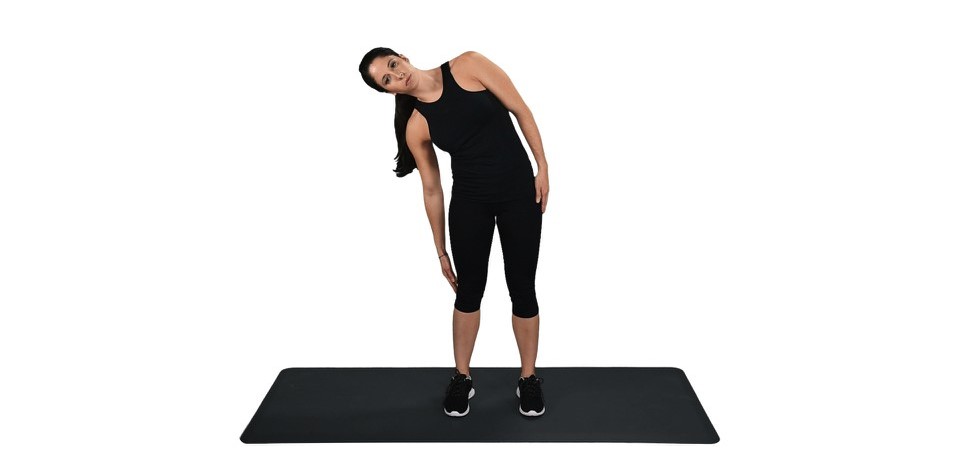
Stretching and Cooldown
After finishing the circuit, spend a few minutes stretching to release tension and enhance flexibility. Read about my 8 favorite stretching exercises I do every day
Tips for Success ✅
1. Start Slow
Postpartum recovery takes time, so focus on consistency over intensity.
2. Listen to Your Body
If you feel pain or discomfort, stop immediately and consult your doctor.
3. Stick With It
Commit to this workout 3–4 times a week, and gradually increase the intensity as your strength improves.
Conclusion 🎉
After my baby was born, I struggled with constant fatigue. Of course, lack of sleep played a big role—but I also realized I missed being active. Taking just 15 minutes for myself, whether to do this workout or take a quick walk outside, made a huge difference. It gave me a much-needed energy boost and helped me feel more like myself again.
If I could overcome the challenges of finding time to exercise with my little one, I believe you can too. Start small, be patient with yourself, and celebrate the progress you make. You deserve this time to rebuild your strength and feel good in your body again. You’ve got this! 💪
